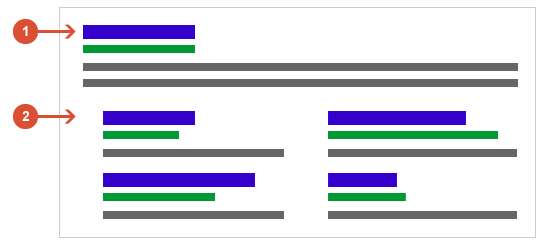How to Create an SEO-friendly Site Structure
Every website should have a defined site structure; the architecture upon which the rest of your webpages depend. Just like your home, a solid website architecture provides for a robust and safe-haven for what really matters. Poor site structure can, in contrast, damage SEO and, in turn, reduce the volume of relevant traffic that reaches your website. The question is – why is it important to build a site structure and how can this be achieved?
To achieve the very best SEO response from search engines, your website must have a clear and defined structure.
Why is site structure important?
Think about this question from a user perspective.
Visitors to your website expect to find the product, service or information they’ve searched for. If your website is not user-friendly, they won’t be able to find what they want – and, without that, the bounce rate of your website is likely to increase. High bounce rates are frowned upon by search engines; it means that visitors aren’t finding what they want and so they leave.
A well-defined site structure is a welcome present for crawlers, those digital spiders that crawl through your website and relay those pages and updates to search engines. Poor site structure means that crawlers are unable, or find it very difficult, to find existing or new webpages. Again, this is bad for SEO. Poor web structure also means that sitelinks (see below – (1) is the main website; (2) lists sitelinks of prominent pages on the website, such as ‘Services’ or ‘About us’) – those sub-links that often appear under reputable websites in search results – do not appear.

So, to summarize, site structure is very important for SEO – it enhances user experience; it’s welcomed by search engines who can now effectively crawl your website; and it improves the probability that sitelinks will appear under search results.
Now we must turn to the question of how we can create an SEO-friendly site structure.
Creating an SEO-friendly Site Structure
Designing an SEO-friendly site structure is remarkably simple.
First things first – develop a comprehensive plan of the overall website structure.
1. Know how to sub-divide your navigation bar; the bar that contains the main webpages.
2. From the navigation bar, know how all internal links flow.
3. Ensure there is a logical progression from one link to another.
4. Try to limit the number of main categories to less than 8.
One way of building logical progression into this structure is to construct URLs that follow this progression.
For example: example.com -> example.com/sample/ -> example.com/sample/topic
Each internal page has a father page…and so on – it makes sense.
Similarly, Google crawlers are easily able to follow this type of structure. It is both logical and easy-to-follow. There is no means by which crawlers can find themselves lost.
Even though your website should link in this way, try to construct a website where it only takes three links to reach any other page. This is what’s referred to as a “shallow” website. In contrast, a “deep” website is one where it takes many more links to find most other pages. In general, shallow websites have greater SEO advantages than deep websites.
Always try to link relevance between webpages. If one page has been created to talk about chickens and, in that page, it refers at some point to ‘turkeys’ and, by chance, you have an article written about turkeys, then add the link.
By following the above steps, you create a shallow website with deeper SEO potential built into its fundamental structure. Search engines will reward this architecture with greater crawling and visitors will reward the structure by staying longer and avoiding the ‘back’ button. After all, they’ve found what they’re looking for.
Conclusion
Creating an SEO-friendly site structure is important. There are four main advantages:
• It creates a user-friendly experience for your target visitors
• It makes it easier for search engines to crawl your website
• You can navigate, structure and build-out your website with ease
• For the above reasons, you enhance the website’s SEO potential
For more articles on SEO, marketing, web design and web development, be sure to check back to our blog very soon.
As one of the leading Las Vegas SEO companies, we have helped leading brands throughout the city develop the site structure they need. If you’d like to receive a free quote on any of our web services, contact us today for more information.







